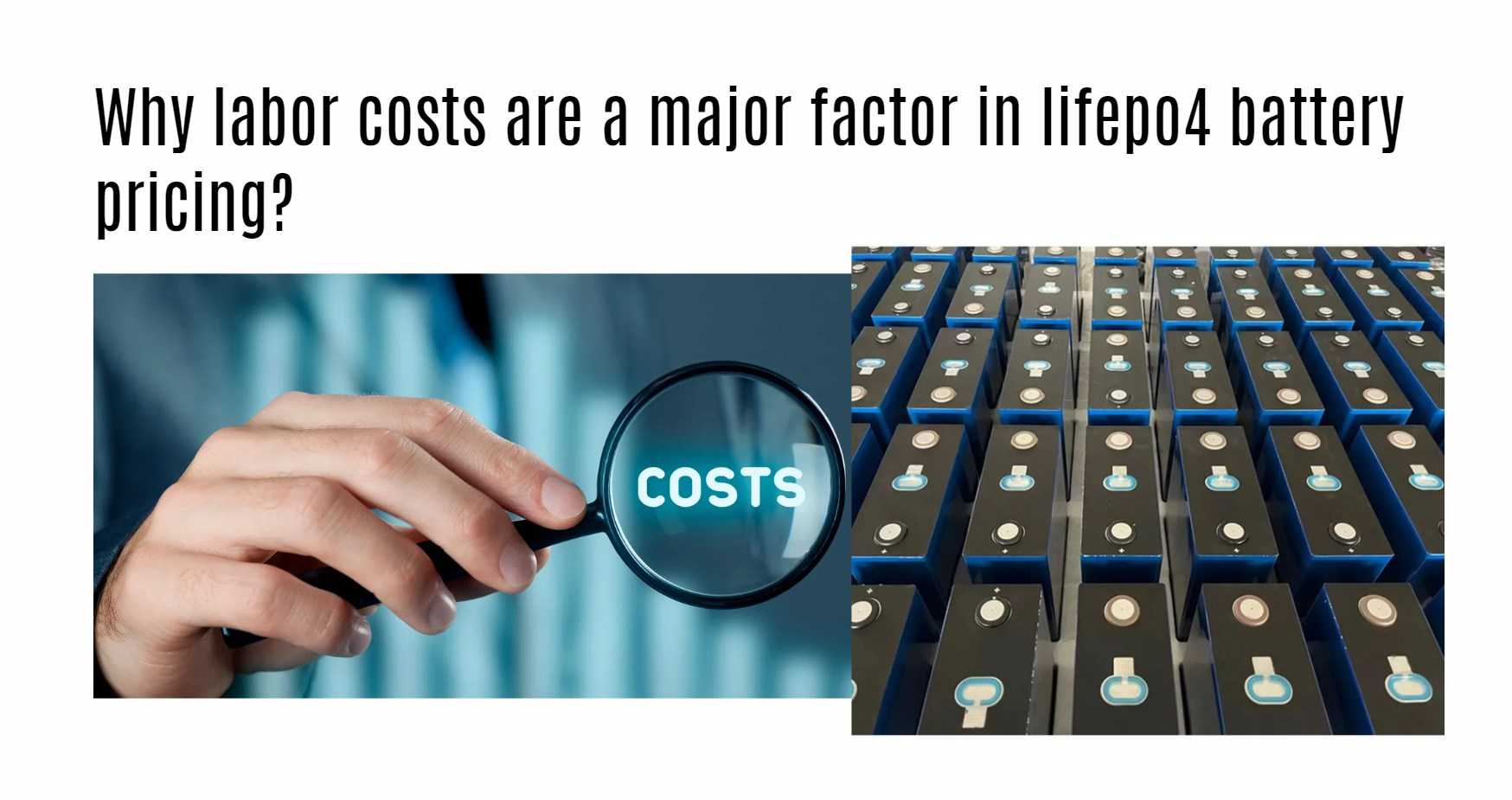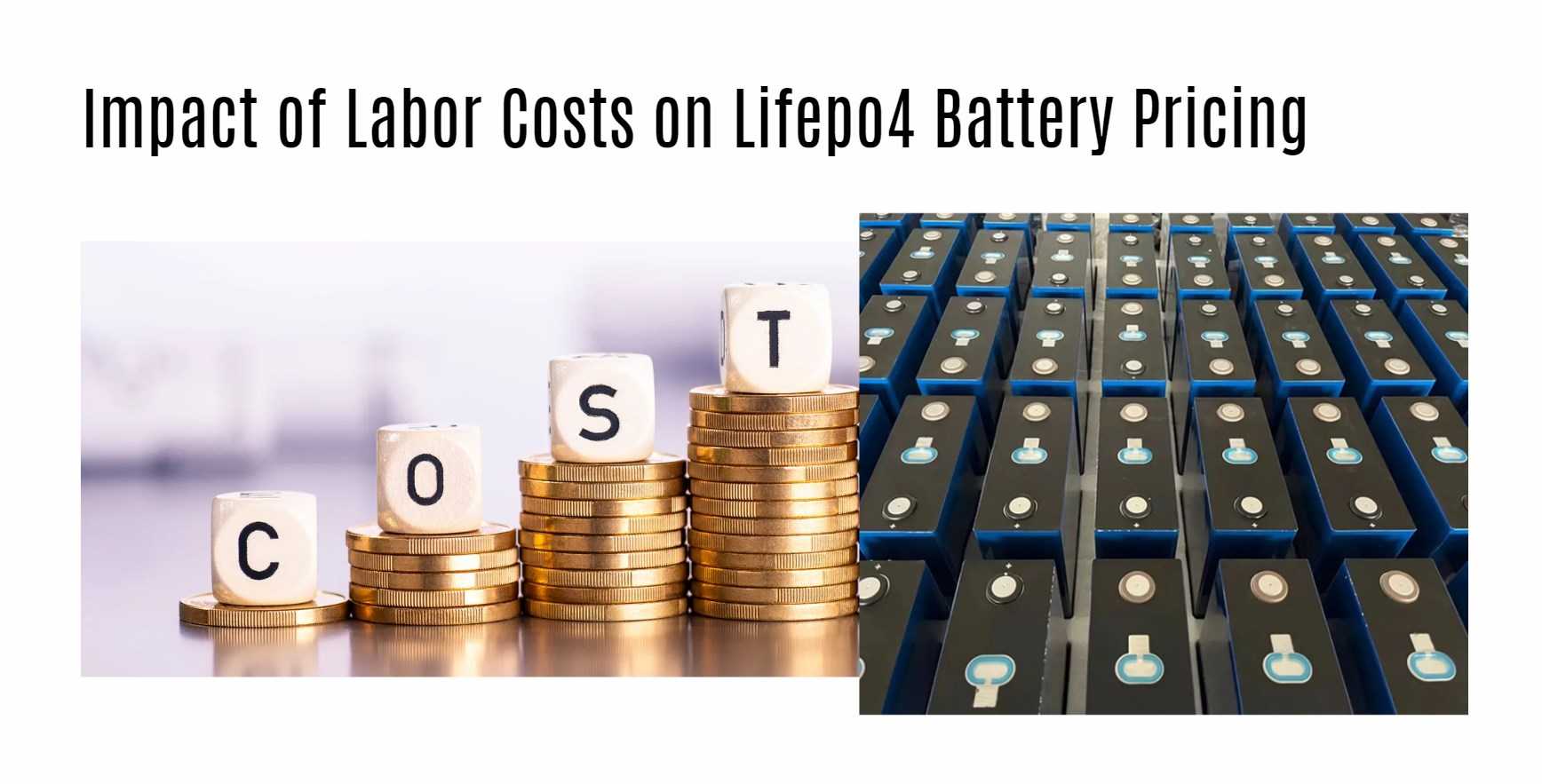Welcome to the electrifying world of Lifepo4 batteries, where cutting-edge technology meets sustainable energy solutions. As we delve into the realm of battery manufacturing, one crucial factor that often goes unnoticed but plays a significant role in determining pricing is labor costs. Join us on this journey as we uncover the importance of labor costs in shaping the landscape of Lifepo4 battery pricing and explore strategies to navigate this dynamic industry successfully.
The Importance of Labor Costs in Battery Manufacturing
When it comes to manufacturing Lifepo4 batteries, the importance of labor costs cannot be understated. Labor costs play a significant role in determining the overall price of these high-performance batteries that are widely used in various industries.
The intricate process of assembling and testing each battery unit requires skilled labor and precision. From electrode preparation to cell formation and final assembly, every step in the manufacturing process involves human expertise and attention to detail.
Wholesale lithium golf cart batteries with 10-year life? Check here.
Labor costs also encompass training, benefits, and compliance with safety regulations, all of which contribute to the total production expenses. As technology advances and demand for Lifepo4 batteries grows, optimizing labor efficiency becomes crucial for manufacturers to stay competitive in the market.
Efficient workforce management strategies can help streamline operations and reduce labor costs without compromising on product quality. By investing in automation technologies and continuous training programs for employees, manufacturers can improve productivity while controlling expenses associated with manual labor.
Want OEM lithium forklift batteries at wholesale prices? Check here.
Factors that Affect Labor Costs in Battery Production
Labor costs in battery production are influenced by several key factors. The level of automation in the manufacturing process plays a significant role. Highly automated facilities typically require fewer human workers, thus reducing labor expenses. Additionally, the location of the production facility can impact labor costs – regions with higher wages will naturally incur greater expenses.
Moreover, the skill level and experience of the workforce also contribute to labor costs. Skilled technicians and engineers command higher salaries, adding to overall manufacturing expenses. The complexity of battery designs and technologies involved can also affect labor costs; intricate assembly processes may necessitate more time and skilled labor.
Furthermore, regulatory requirements and compliance standards play a crucial role in determining labor costs in battery production. Companies must invest resources into ensuring their operations adhere to safety protocols and environmental regulations, which can add to overall expenses.
Impact of Labor Costs on Lifepo4 Battery Pricing
Labor costs play a significant role in determining the final price of Lifepo4 batteries. The wages paid to skilled workers involved in the manufacturing process directly impact the overall production expenses. As labor costs rise, so does the cost of producing these advanced batteries. This increase in production costs inevitably gets passed on to consumers in the form of higher prices.
Moreover, unlike some other types of batteries that may have simpler manufacturing processes, Lifepo4 batteries require meticulous attention to detail and precision during assembly. This level of expertise demands skilled labor, further contributing to elevated labor costs.
In addition to direct labor expenses, overhead costs such as training and maintaining a highly skilled workforce also factor into the pricing equation for Lifepo4 batteries. Therefore, any fluctuations or increases in these operational costs can have a ripple effect on the final retail price seen by consumers.
Comparison of Lifepo4 Battery Prices with Other Types of Batteries
When it comes to comparing Lifepo4 battery prices with other types of batteries, there are several factors to consider. While Lifepo4 batteries may have a higher upfront cost than traditional lead-acid batteries, they offer longer lifespan and better performance over time. This makes them a more cost-effective option in the long run.
In comparison to lithium-ion batteries, Lifepo4 batteries tend to be more affordable due to their simpler manufacturing process and safer chemical composition. Additionally, Lifepo4 batteries are known for their stability and lower risk of thermal runaway compared to other lithium-based alternatives.
On the other hand, when comparing Lifepo4 batteries with nickel-cadmium or nickel-metal hydride batteries, the former typically come at a higher price point but offer superior energy density and cycle life. This makes them a preferred choice for applications where longevity and efficiency are crucial.
While Lifepo4 battery prices may vary depending on specific brands and sizes, they often prove to be a worthwhile investment considering their durability and performance advantages in various applications.
Strategies for Reducing Labor Costs in Battery Production
When it comes to reducing labor costs in battery production, implementing efficient automation processes is key. By integrating technology and robotics into manufacturing lines, tasks that were once done manually can now be completed faster and more accurately.
Another strategy is to invest in employee training and development programs. Well-trained workers are not only more productive but also less prone to errors, leading to cost savings in the long run.
Streamlining supply chain processes can also help cut down on labor costs. By optimizing logistics and inventory management, manufacturers can minimize unnecessary labor hours spent on handling materials and components.
Moreover, standardizing production procedures and adopting lean manufacturing principles can eliminate waste and increase operational efficiency, ultimately driving down labor expenses.
By continuously evaluating and improving workflows, companies can identify areas where labor costs can be reduced without compromising product quality or output levels. Embracing innovation and creativity in problem-solving is essential for staying competitive in the ever-evolving battery industry.
Future Outlook and Potential Solutions to Address Rising Labor Costs
As technology advances and automation becomes more prevalent in manufacturing processes, the future outlook for addressing rising labor costs in Lifepo4 battery production looks promising. Companies are increasingly investing in robotics and AI to streamline operations and reduce dependency on manual labor.
By implementing efficient supply chain management strategies and adopting lean manufacturing principles, companies can optimize their production processes and minimize labor expenses. Collaboration with research institutions to develop innovative battery production techniques can also help reduce reliance on traditional labor-intensive methods.
Furthermore, training programs aimed at upskilling employees to work alongside automated systems can enhance productivity while keeping labor costs under control. Embracing sustainability practices not only benefits the environment but also drives cost savings through energy efficiency measures.
By embracing technological advancements, improving operational efficiencies, investing in employee development, and prioritizing sustainable practices, the Lifepo4 battery industry is poised to effectively address the challenge of rising labor costs.
Conclusion
Labor costs play a significant role in determining the pricing of Lifepo4 batteries. As one of the key factors in battery production, labor costs directly impact the final price consumers pay for these high-performance batteries. Various aspects such as manufacturing processes, workforce skill level, and automation technologies influence labor costs in battery production.
While labor costs are just one component of overall battery pricing, they remain a crucial factor that manufacturers must consider to stay competitive in the market. By understanding and addressing the challenges associated with rising labor costs, industry players can develop strategies to optimize production efficiency and reduce expenses without compromising on quality.
As technology continues to advance and demand for sustainable energy solutions grows, finding innovative ways to manage labor costs will be essential for driving down prices and making Lifepo4 batteries more accessible to a wider range of consumers. By prioritizing efficiency improvements and investing in automation technologies, manufacturers can navigate the complexities of labor expenses while delivering high-quality products that meet evolving market demands.







